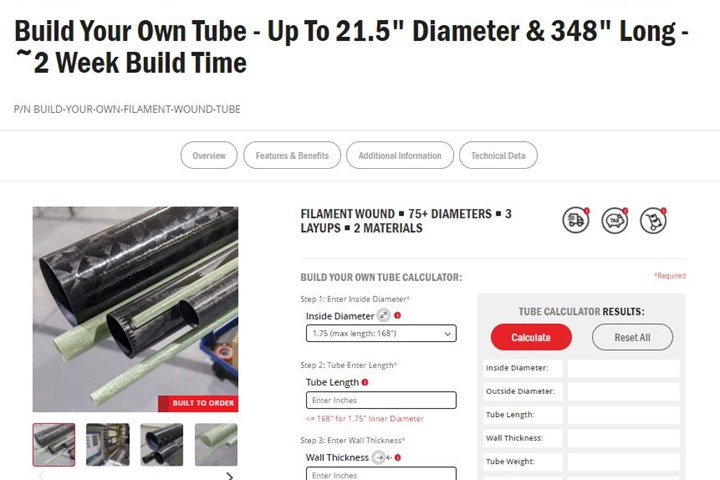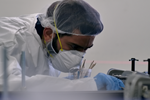Rock West Composites offers custom filament-wound tube website feature
Customers can now define their own filament-wound tube specifications per a build-to-order ecommerce transaction. Over 450 base options, 75 mandrels and two materials are available.

Photo Credit: Rock West Composites
Rock West Composites (RWC, Salt Lake City, Utah, U.S.) has announced the addition of a “Build Your Own Tube” feature to its website. The new feature allows customers to define specific filament-wound tube attributes, provides a range of pricing based on order volume and enables immediate check out.
With 450 base options, 75 mandrels and two materials available, customers can define interior diameter, wall thickness (almost any thickness), tube length, material and key performance characteristic for their custom tube order. Current materials available include intermediate-modulus carbon fiber and fiberglass (E-glass). Performance characteristics include bending stiffness, torque and internal pressure. Tubes are manufactured via filament winding. While RWC has plans to further expand the selection, the company notes that the website feature highlights only a small fraction of the off-the-self and customization options that RWC offers.
According to RWC, checkout is processed as soon as the customer is ready, and shipping is handled separately.
“Our customers have asked for the ability to get fast pricing for custom work and easy checkout via our website, and this is answering that request,” says Dave Erickson, general manager of the Salt Lake City facility. “Ecommerce innovation is how we grow our business and help our customers succeed.”
Access the new website feature here.
Related Content
-
Jeep all-composite roof receivers achieve steel performance at low mass
Ultrashort carbon fiber/PPA replaces steel on rooftop brackets to hold Jeep soft tops, hardtops.
-
Active core molding: A new way to make composite parts
Koridion expandable material is combined with induction-heated molds to make high-quality, complex-shaped parts in minutes with 40% less material and 90% less energy, unlocking new possibilities in design and production.
-
A new era for ceramic matrix composites
CMC is expanding, with new fiber production in Europe, faster processes and higher temperature materials enabling applications for industry, hypersonics and New Space.
















